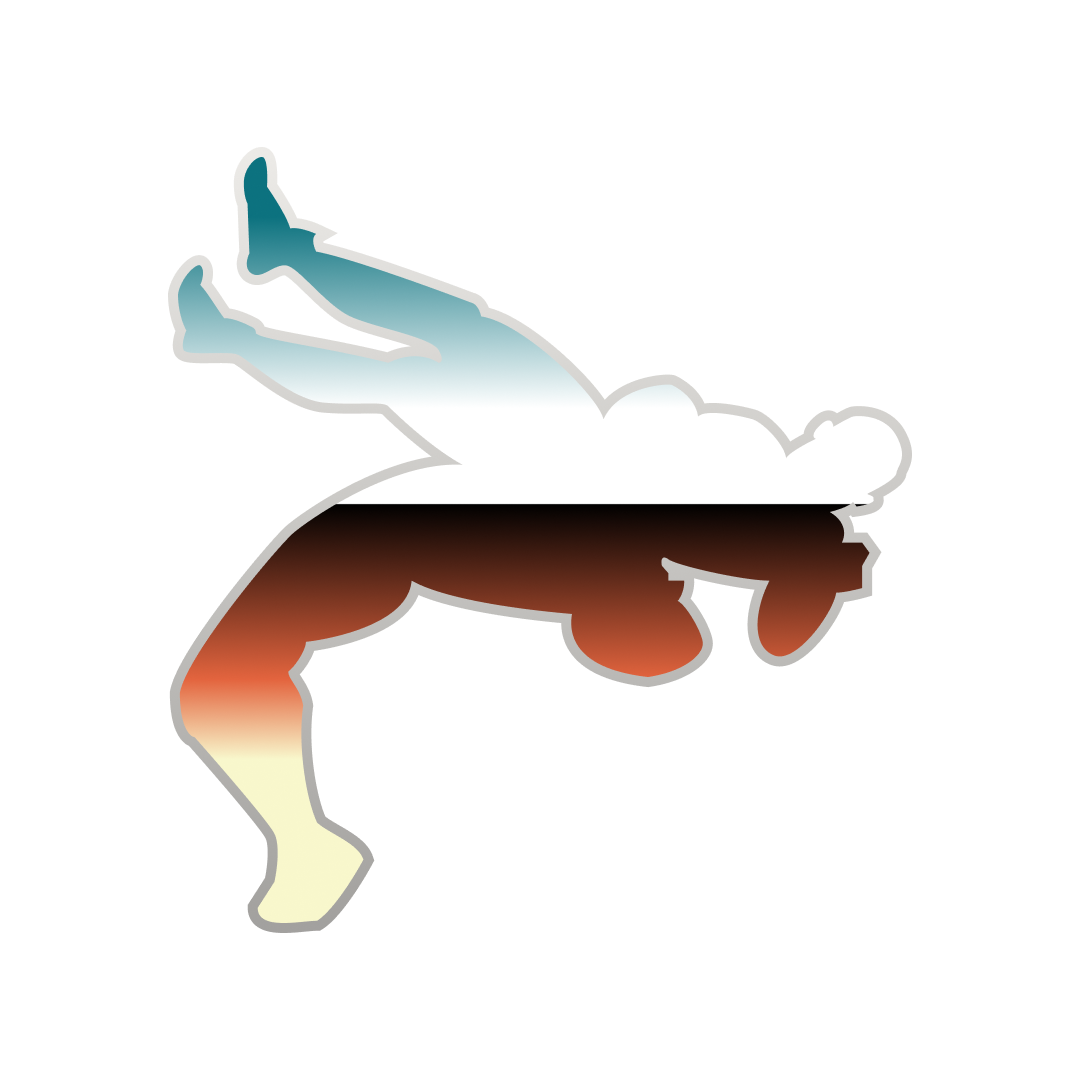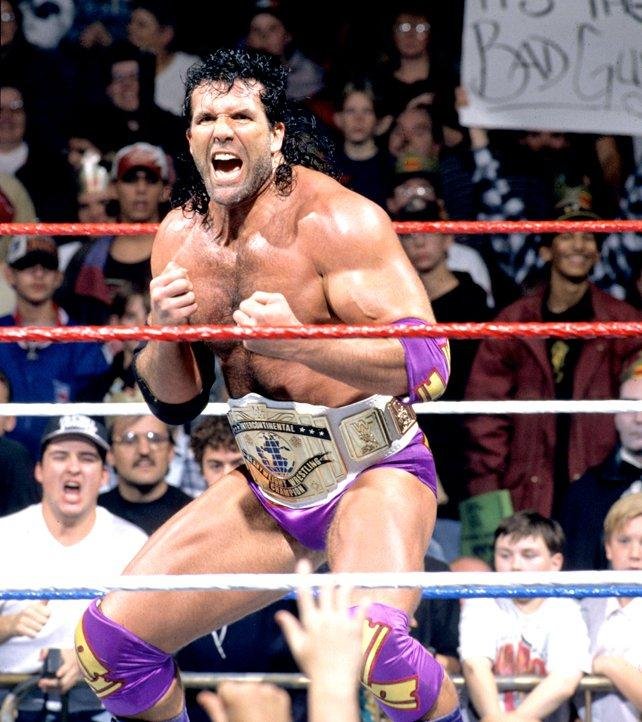The Lives of Scott Hall
Remembering the cool factor and legacy of a wrestling great.
(courtesy of wwe.com)
You never looked at a fucking toothpick the same way again. How someone could make a simple object the symbol of cool, shows how effortless Scott Hall made everything. He did the same with vests. With Mr. T gold. With stubble. With abundant chest hair. Everything he did was cool, or as his first breakout persona said, “oozing with machismo.”
Every wrestling fan has a moment when “their guy” they’ve always liked gets his first cementing push. My equivalent for Razor Ramon was when he co-won a battle royal on the October 4, 1993 edition of Raw for the Intercontinental Title (weird stipulation, the last two guys remaining would “win” and then battle for the vacant belt the week after, Razor beating Rick Martel in a forgone conclusion). Razor was everything you wanted your favorite babyface to be in that battle royal: overcoming insurmountable odds, charismatic, cool, smart, shit-talker, and the sensation that the rest of the crowd in the audience were realizing he was their favorite guy at the same time you came to that conclusion.
As grueling as the wrestling business can be for its performers, there’s some select few that have an “it” factor so undeniable that it’s only a matter of time when they become stars. Scott Hall became one in 1992 when he became Razor Ramon. As the oft-repeated story goes, Hall met with Vince McMahon to pitch creative and started talking in a Scarface like rap and Vince McMahon, being completely fucking oblivious to any morsel of pop culture outside his own creation, fell in love with it and Hall transformed into “The Bad Guy” Razor Ramon.
Hall’s life before Razor was fraught in struggle and, depending on ones vantage point, finding and forgetting himself. He paired up with Curt Henning in AWA for a while, bounced around to the NWA, the Indies, and then back to WCW. But before all that, with what would be diagnosed as the cause of his post traumatic stress disorder and later addiction struggles, was the killing of another man in self-defense outside of a Florida strip club. It was Jan 15, 1983. A man brandishing a handgun approached Hall, Hall wrestled control of the gun from the man, and as he attempted to pistol-whip him to subdue him, the gun went off. In the moving WWE documentary, Living on a Razor’s Edge: The Scott Hall Story, immediately after retelling this life-defining, psyche-rattling tragedy, Hall prophetically stated, “That’s why I think I embraced wrestling from the beginning anyway. It was an opportunity to be somebody else. Because I wasn’t thrilled about the guy that I was.”
Knowing what we know about professional wrestling, it’s almost like multiple personality disorder is an occupational hazard. Wrestling’s real, but it’s fake. Punches are pulled, but landed when disrespect is suspected. You’re not yourself anymore, you’re a character. And you’re expected to be on as your persona, and your livelihood is predicated upon being that fictional personality at all times. It’s no wonder wrestlers of a certain era develop tremendous mental problems. Or have a life expectancy in their 40s. That’s the ending we thought Scott Hall would have since the 1990s.
But he gave himself a greater ending. I don’t have to repeat the classic stanza that ended his great Hall of Fame speech, you’ve seen it on Twitter and YouTube and hopeful will for forever. There’s no need to dwell on his fall, I’d rather celebrate the rise. Scott Hall’s legacy is someone who gave so much in the ring and outside of it because he believed in himself to always get back.
How many stories did we read in the last 24 hours of wrestlers that passed through NXT that got great advice from Hall? It’s a shame he never got a proper creative role within WWE, as his ideas had tremendous value. I mean, he was the one that thought of The Crow Sting, that’s still a viable act today that has sold millions in t-shirts and gimmicks. When he left WWE over pay disputes to WCW, he was the one that against all odds, turned Hulk Hogan into a cool heel, which was unthinkable if you watched WCW’s product and output from Hogan mere months earlier. The nWo is still worth a shitload as a brand and those shirts still exists everywhere and will forever.
Inside the ring, if it wasn’t for Scott Hall agreeing to put him over, you arguably wouldn’t have Sean Waltman. Razor Ramon lost the biggest upset to the then Lightning Kid (Waltman) gifting him a new persona called the 1-2-3 Kid. It was one of the first moments when Monday Night Raw first became must-see TV—that a jobber won a squash match, something that was never done on WWE before. Razor Ramon and Shawn Michaels stole the show the next year at WrestleMania X in a ladder match, without question one of the most seminal and influential matches of all time that’s still replicated in some fashion today.
In WCW as part of the nWo, he played an even broader bumper then Curt Hennig, making everyone look credible and good because he knew he’d get all his heat and cool factor back by giving a “Hey Yo,” and doing the survey.
PTSD and his substance issues made him a real-life bad guy in phases, but go seek out his matches on Peacock as The Bad Guy. Check out his match at Survivor Series 1992 teaming with Ric Flair against Randy Savage and Mr. Perfect. Watch his first PPV main event slot against Bret Hart for the title at Royal Rumble 1993 (which includes in the promo video before the match of his attacking Owen Hart, choking him, while casually asking, “Did yer daddy teach you that one, Rocket?” in that faux-cuban accent he never lost until he found sobriety.) Watch the ladder matches for a billionth time again.
And if there’s one classic match you want to watch this week to remember Scott Hall/Razor Ramon, watch the tag-team match from 1994 from the first Action Zone of Razor Ramon and the 1-2-3 Kid vs. Shawn Michaels and Diesel (it’s on “Shawn Michaels: Hits From the Heartbreak Kid”). He’ll live forever as part of the Kliq, doing what they do best, loving the business and each other.
(courtesy of wwe.com)



